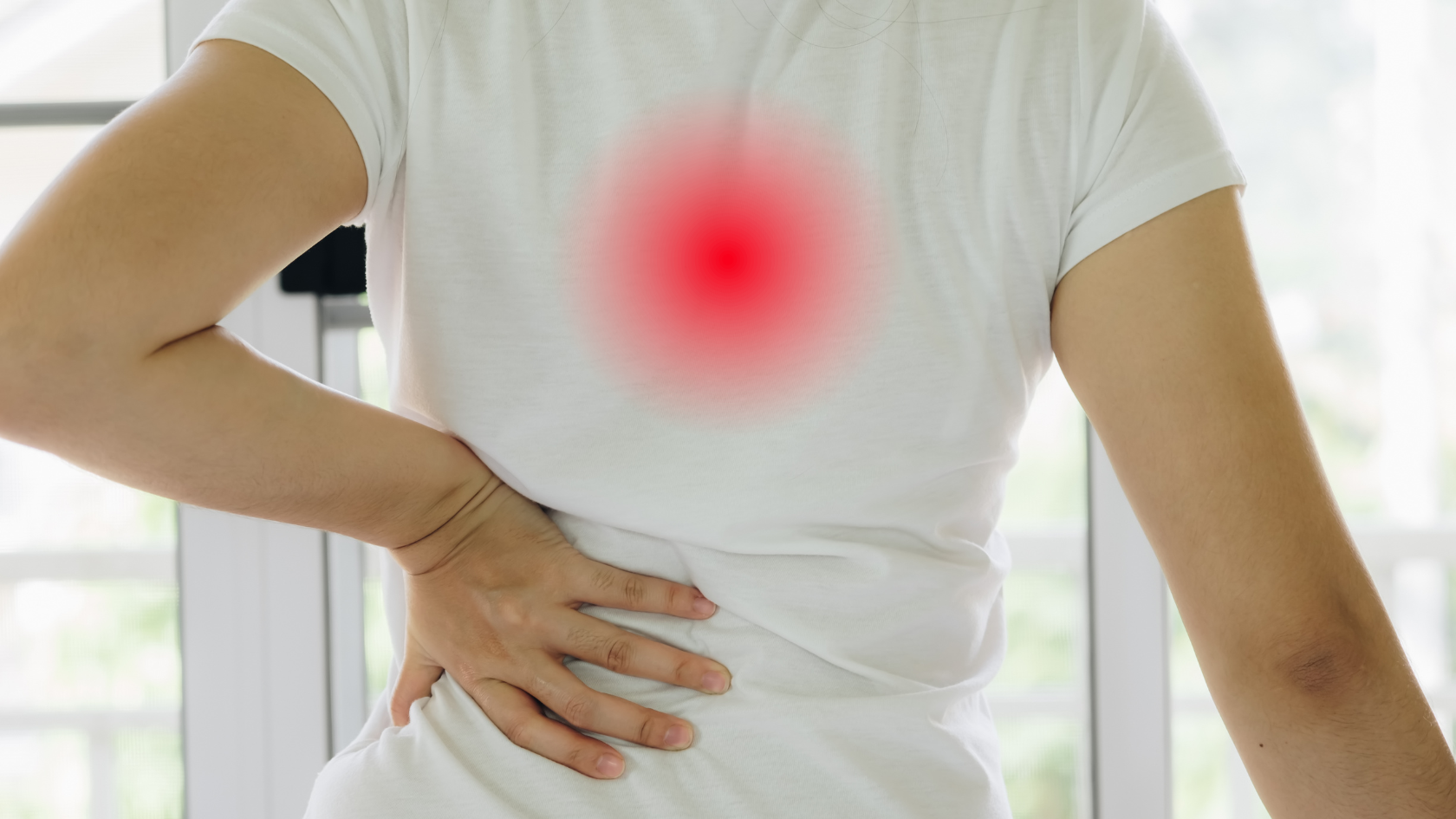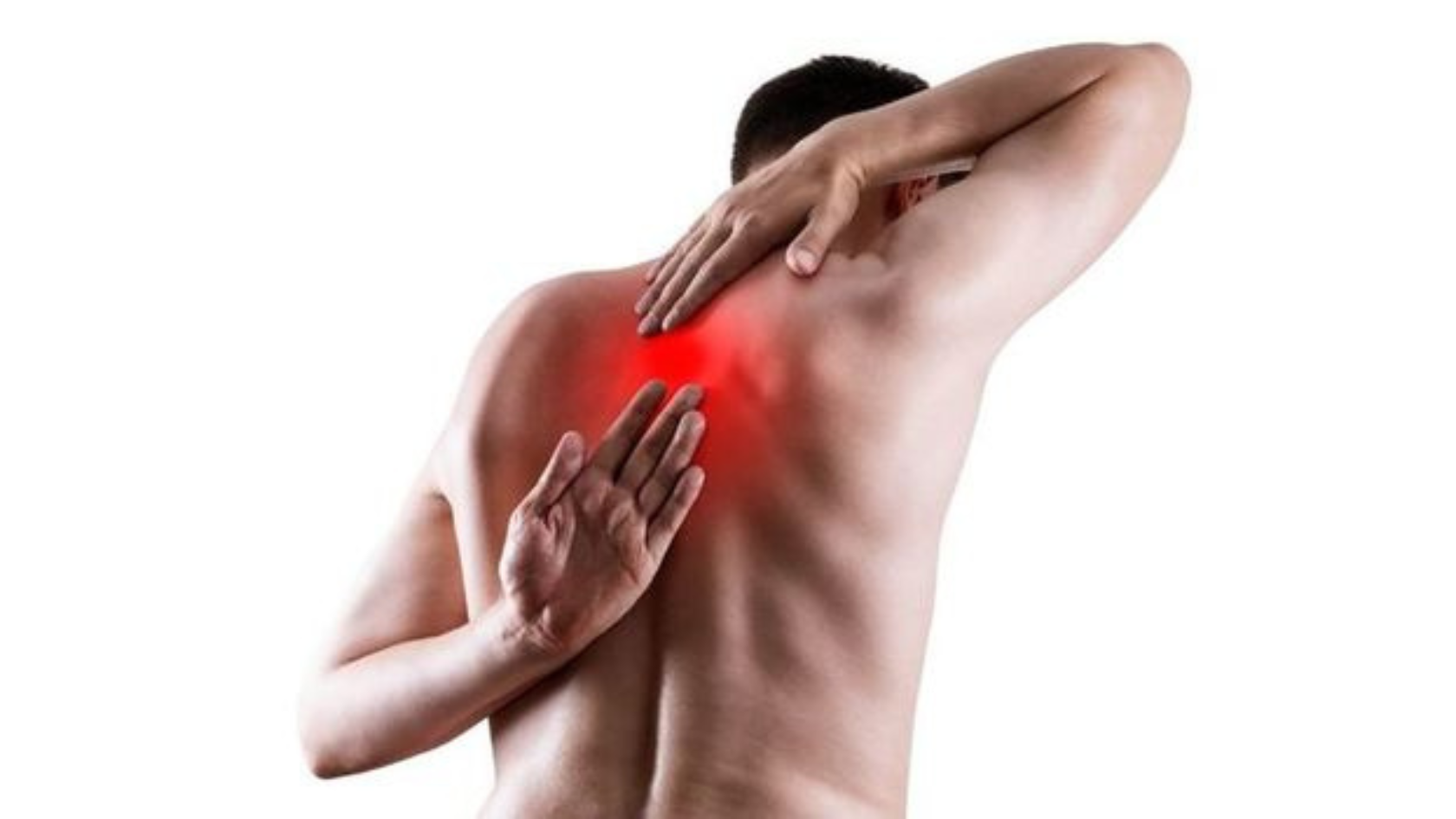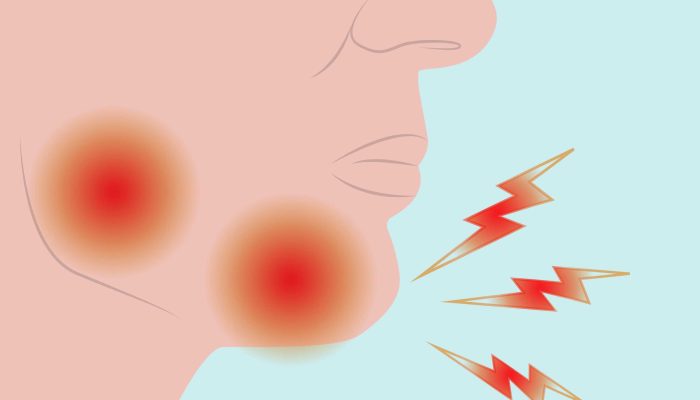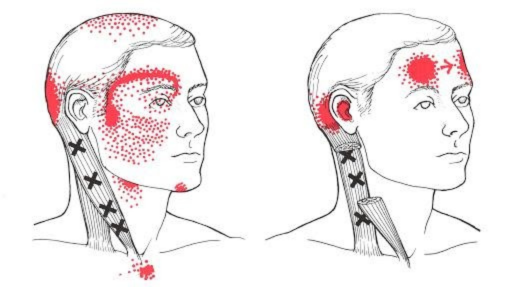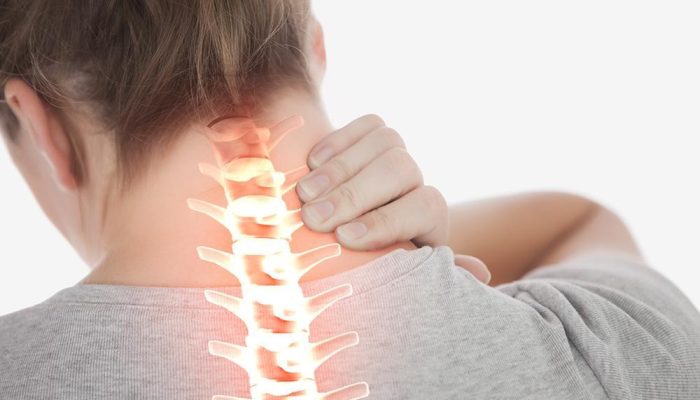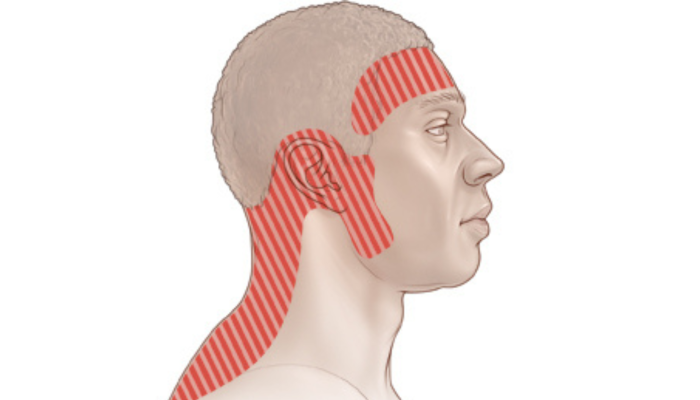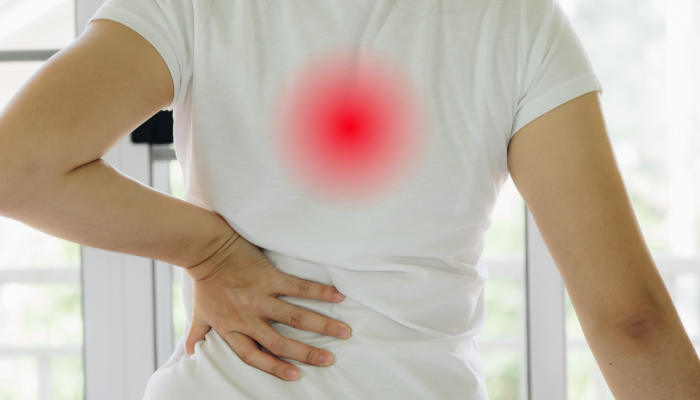
Arthritis
Arthritis, particularly osteoarthritis, can affect the spine and lead to middle back pain. This condition causes the cartilage between the joints to wear down, resulting in inflammation, stiffness, and pain.
Fractured Vertebrae
A fractured vertebra in the middle back can occur due to trauma, such as a car accident or a fall, or from conditions that weaken the bones, like osteoporosis. This injury can cause significant pain and mobility issues.
Herniated Discs
A herniated disc occurs when the soft, gel-like center of a spinal disc pushes through a crack in the tougher exterior casing. This can irritate nearby nerves and result in pain, numbness, or weakness in the middle back.
Kidney Problems
Kidney problems, including infections, stones, or other kidney-related conditions, can cause pain that radiates to the middle back. This pain is often accompanied by other symptoms such as fever, pain during urination, and changes in urine color.
Lifestyle Factors
Lifestyle factors, such as poor posture, lack of exercise, and prolonged sitting or standing, can contribute to middle back pain. These factors can cause muscle imbalances and strain on the back muscles.
Muscle Strain or Sprain
Muscle strain or sprain in the middle back can occur from overuse, improper lifting, or sudden movements. This can result in tight mid back muscles, causing pain and discomfort.
Overweight and Obesity
Being overweight or obese puts extra stress on the back muscles and spine, leading to pain in the middle back. Excess weight can also contribute to poor posture and muscle imbalances.
Osteoporosis
Osteoporosis weakens the bones, making them more susceptible to fractures. This condition can lead to compression fractures in the spine, causing significant middle back pain.
Poor Posture
Poor posture, such as slouching or hunching over a desk, can strain the mid back muscles and lead to pain. Maintaining good posture is crucial for preventing and alleviating middle back pain.
Mental Health Conditions
Mental health conditions, such as stress, anxiety, and depression, can manifest physically as muscle tension and pain in the middle back. Chronic stress can lead to muscle tightness and discomfort.
Scoliosis
Scoliosis, a condition characterized by an abnormal lateral curvature of the spine, can cause uneven strain on the back muscles and result in middle back pain. This condition can range from mild to severe.
Tumor
A tumor in or near the spine can cause middle back pain. This pain may be due to the pressure exerted by the tumor on surrounding tissues and nerves. Tumors can be benign or malignant and require medical evaluation.
Treatment
Home Remedies
- Rest: Allowing the middle back muscles to rest can help reduce pain and inflammation.
- Ice and Heat Therapy: Applying ice packs and heating pads can help alleviate pain and relax tight muscles.
- Over-the-Counter Pain Relievers: Medications like ibuprofen or acetaminophen can help manage pain and reduce inflammation.
- Massage: Gentle massage can help relieve muscle tension and improve blood flow to the affected area.
Exercises
- Stretching: Regularly stretching the mid back muscles can help improve flexibility and reduce tightness. Stretching middle back muscles can be achieved through exercises like the cat-cow stretch, child’s pose, and seated forward bend.
- Strengthening Exercises: Strengthening the center back muscles can help support the spine and prevent pain. Exercises like rows, lat pulldowns, and reverse flies can be beneficial.
- Aerobic Activities: Engaging in low-impact aerobic activities, such as walking or swimming, can improve overall fitness and reduce back pain.
Medical Treatments
- Physical Therapy: A physical therapist can develop a personalized exercise program to strengthen and stretch the mid back muscles.
- Chiropractic Care: Chiropractic adjustments can help alleviate pain and improve spinal alignment.
- Medications: Prescription medications, such as muscle relaxants or anti-inflammatories, may be necessary for more severe pain.
- Surgery: In rare cases, surgery may be required to address underlying conditions, such as herniated discs or spinal fractures.
Prevention
- Maintain Good Posture: Practice good posture by keeping the back straight and shoulders back when sitting and standing.
- Exercise Regularly: Engage in regular physical activity to strengthen the middle back muscles and improve flexibility.
- Lift Properly: Use proper lifting techniques, such as bending the knees and keeping the back straight, to avoid muscle strain.
- Maintain a Healthy Weight: Keeping a healthy weight can reduce stress on the back muscles and spine.
- Take Breaks: Avoid prolonged periods of sitting or standing by taking regular breaks to move and stretch.
When to Contact a Doctor
It is important to contact a doctor if middle back pain persists for more than a few weeks, is severe, or is accompanied by other symptoms such as numbness, tingling, weakness, or difficulty breathing. Medical evaluation is also necessary if the pain is the result of an injury or if there are signs of a serious underlying condition, such as a tumor or infection.
Frequently Asked Questions
Why would the middle of a person’s back hurt?
Middle back pain can result from a variety of causes, including muscle strain, poor posture, herniated discs, arthritis, and kidney problems. Lifestyle factors and underlying health conditions can also contribute to middle back pain.
How can a person relieve middle back pain?
Relieving middle back pain can involve home remedies such as rest, ice and heat therapy, over-the-counter pain relievers, and massage. Regular stretching and strengthening exercises for the middle back muscles can also help alleviate pain. For persistent or severe pain, medical treatments may be necessary.
What is a strain in the middle of the back?
A strain in the middle of the back occurs when the muscles or tendons in the mid back are overstretched or torn. This can result from overuse, improper lifting, or sudden movements. Symptoms include pain, muscle tightness, and limited range of motion.
Summary
Middle back pain is a common issue that can arise from various causes, including muscle strain, poor posture, herniated discs, and underlying health conditions. Effective treatment often involves a combination of home remedies, exercises, and medical treatments. Preventative measures, such as maintaining good posture, regular exercise, and proper lifting techniques, can help reduce the risk of developing middle back pain. If pain persists or is accompanied by other concerning symptoms, it is important to seek medical advice for appropriate diagnosis and treatment.
How to Strengthen Middle Back Muscles
Strengthening the middle back muscles can help support the spine and prevent pain. Here are some effective exercises:
- Rows: Using dumbbells or resistance bands, rows target the middle back muscles. Sit or stand with your back straight, pull the weights or bands towards your torso, and squeeze your shoulder blades together.
- Lat Pulldowns: Using a lat pulldown machine or resistance bands, pull the bar or bands down towards your chest while keeping your back straight. This exercise strengthens the latissimus dorsi muscles, which support the middle back.
- Reverse Flies: Holding dumbbells, bend slightly at the waist with your back straight. Lift the weights out to the sides, focusing on squeezing the shoulder blades together. This exercise targets the rhomboid muscles.
How to Stretch Mid Back Muscles
Regular stretching can improve flexibility and reduce muscle tightness in the middle back. Here are some stretches:
- Cat-Cow Stretch: Start on all fours with your hands under your shoulders and knees under your hips. Alternate between arching your back (cat) and dipping it (cow) while breathing deeply.
- Child’s Pose: Kneel on the floor, sit back on your heels, and stretch your arms forward on the floor. This stretch helps elongate the spine and relax tight back muscles.
- Seated Forward Bend: Sit with your legs extended straight in front of you. Bend forward at the hips, reaching for your toes. This stretch targets the lower and middle back muscles.
How to Loosen Middle Back Muscles
Loosening tight middle back muscles can relieve pain and improve mobility. Here are some techniques:
- Foam Rolling: Using a foam roller, gently roll it over your middle back muscles. This self-massage technique helps release muscle tension and improve blood flow.
- Heat Therapy: Applying a heating pad or warm towel to the tight muscles can help relax them and reduce pain.
- Gentle Stretching: Incorporate gentle stretches into your daily routine to keep the middle back muscles loose and flexible.
How to Relieve Tense Muscles in the Back
Relieving tense muscles in the back involves a combination of techniques:
- Massage Therapy: Professional massage can target specific areas of tension and provide relief.
- Warm Baths: Soaking in a warm bath can help relax tight muscles and reduce pain.
- Relaxation Techniques: Practicing relaxation techniques such as deep breathing, meditation, or yoga can help reduce overall muscle tension.
Prevention
Preventing middle back pain involves adopting healthy habits and lifestyle changes:
- Maintain Good Posture: Sit and stand with your back straight and shoulders back. Avoid slouching or hunching over, especially when using electronic devices.
- Exercise Regularly: Incorporate exercises that strengthen and stretch the middle back muscles. Regular physical activity helps maintain overall muscle health and flexibility.
- Lift Properly: Use proper lifting techniques to avoid straining your back. Bend your knees, keep your back straight, and lift with your legs, not your back.
- Maintain a Healthy Weight: A healthy weight reduces the stress on your back muscles and spine, decreasing the risk of pain.
- Take Breaks: Avoid prolonged sitting or standing by taking regular breaks to move and stretch. This helps prevent muscle stiffness and imbalances.
When to Contact a Doctor
It’s important to seek medical attention if:
- Pain Persists: Middle back pain lasts for more than a few weeks despite home treatments.
- Severe Pain: Pain is severe and affects daily activities or sleep.
- Other Symptoms: Pain is accompanied by symptoms such as numbness, tingling, weakness, difficulty breathing, or changes in bowel or bladder control.
- Injury: Pain is the result of a traumatic injury, such as a fall or car accident.
- Underlying Conditions: There are signs of a serious underlying condition, such as a tumor, infection, or osteoporosis.
Frequently Asked Questions
Why would the middle of a person’s back hurt?
Middle back pain can occur due to various reasons, including muscle strain, poor posture, herniated discs, arthritis, kidney problems, and underlying health conditions. Lifestyle factors and mental health conditions can also contribute to middle back pain.
How can a person relieve middle back pain?
Relieving middle back pain can involve home remedies such as rest, ice and heat therapy, over-the-counter pain relievers, and massage. Regular stretching and strengthening exercises for the middle back muscles can also help alleviate pain. For persistent or severe pain, medical treatments may be necessary.
What is a strain in the middle of the back?
A strain in the middle of the back occurs when the muscles or tendons in the mid back are overstretched or torn. This can result from overuse, improper lifting, or sudden movements. Symptoms include pain, muscle tightness, and limited range of motion.
Summary
Middle back pain is a common issue that can arise from various causes, including muscle strain, poor posture, herniated discs, and underlying health conditions. Effective treatment often involves a combination of home remedies, exercises, and medical treatments. Preventative measures, such as maintaining good posture, regular exercise, and proper lifting techniques, can help reduce the risk of developing middle back pain. If pain persists or is accompanied by other concerning symptoms, it is important to seek medical advice for appropriate diagnosis and treatment.
By understanding the causes and treatments for middle back pain, individuals can take proactive steps to manage their pain and improve their overall quality of life. Regular exercise, good posture, and healthy lifestyle choices play a crucial role in maintaining a healthy back and preventing pain.
If you have any questions for us, you can see more at: heathcarenow, Youtube, Twitter(X),…
See more of our other articles: What is Jaw Pain ?, Catabolism vs. Anabolism: What’s the Difference?, Tennis Ball Massage for Myofascial Trigger Points

